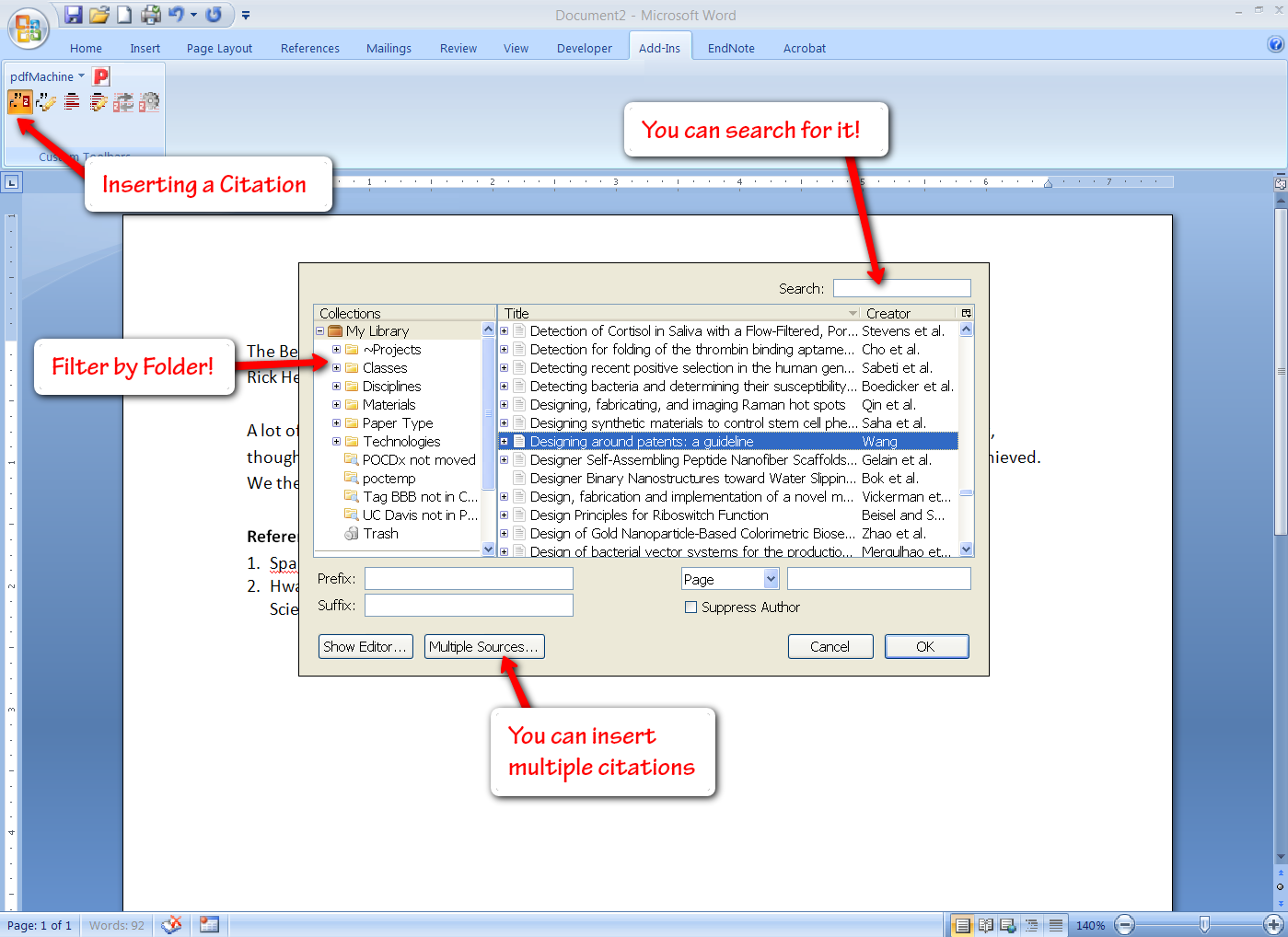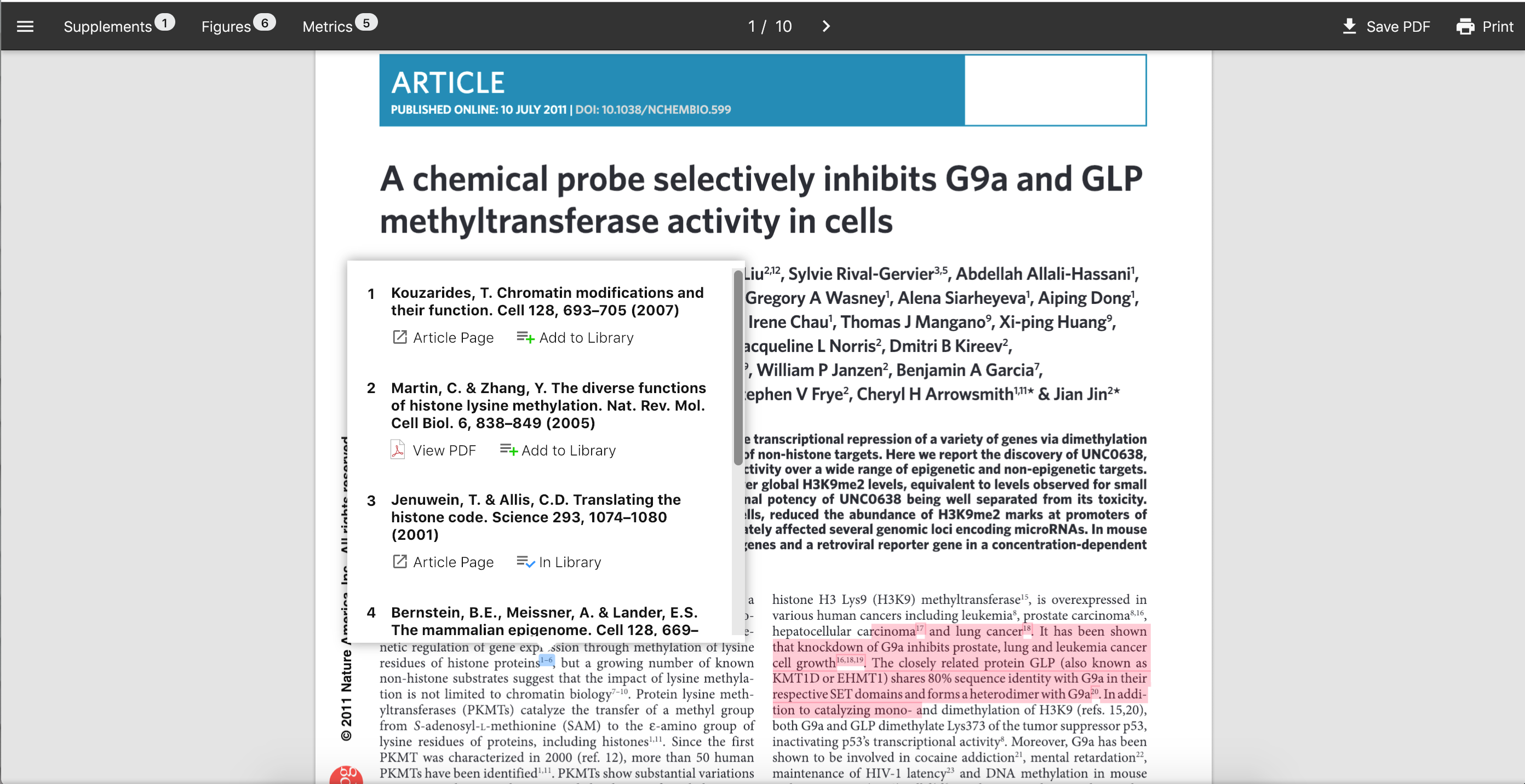

- #ADD ZOTERO TO ENDNOTE DOCUMENT HOW TO#
- #ADD ZOTERO TO ENDNOTE DOCUMENT INSTALL#
- #ADD ZOTERO TO ENDNOTE DOCUMENT FREE#
If you want data for unknown fields to be retained in notes (as described above), also search for “” and set this option to false. Search for “” and double-click to set it to true. If this is required, then, in Zotero, open the Advanced pane of Zotero preferences and click the “Config Editor” button on the “General” tab. The only benefit of RIS over XML is that the EndNote database ID can be retained for each item. Instead of EndNote XML, it is also possible to export items from EndNote using RIS. You can quickly delete all of these notes by selecting the tag in the tag selector, clicking in the items list and typing Cmd+A (Mac) or Ctrl+A (Windows/Linux) to select all matching items, and then right-clicking on a selected item and choosing “Move Items to Trash…”. You can quickly display all of the notes generated during import by clicking on the “_EndnoteXML import” tag in the tag selector in the lower-left corner of the Zotero window. Additionally, you should check these notes to determine if any data could be migrated to proper Zotero fields (which is particularly important if you were using EndNote fields in non-standard ways). You should review each of these notes to determine if the data needs to be retained and delete any unnecessary notes. If the import adds many of these notes, Zotero's performance can be negatively impacted. These notes will be tagged with “_EndnoteXML import”. Note that, if Zotero encounters any fields in the EndNote XML data that it does not support (e.g., custom fields, author address, author affiliation), it will add these data to a note attached to the imported item. Navigate to the location where you exported your EndNote library (if you followed the above instructions, this should be My Documents\endnote.Data) and select the. A dialog box will appear asking you to select the file to import. In Zotero, click “Import…” in the File menu. After you have imported your library and checked to be sure you are satisfied with the imported data, you can re-enable automatic sync. You should also temporarily disable automatic sync in Zotero's Sync preferences. In that event, simply restore your library from the backup.

This can avoid frustration if you do not like the way your library has transferred.
#ADD ZOTERO TO ENDNOTE DOCUMENT INSTALL#
Mac users can install Ref2RIS, which will convert a bibliography (in TXT, RTF, DOC, DOCX, ODT, HTML, or webarchive) into the RIS format that EndNote can read.If you are not importing into an empty library, we highly recommend making a backup of you Zotero data directory.It involves copying and pasting the citations into the interface, with each citation on a new line. If most of your citations are included in the PubMed database (for medicine), you can use the HubMed Citation Finder to locate the citations.Export the references from Zotero to EndNote ( instructions).On the screen, click the Zotero Connector plugin icon in your browser, next to the URL Address bar.Copy your bibliography from your Word document and paste it into the CrossRef query box, then click Submit.Install Zotero and the Zotero Connecter browser plugin.
#ADD ZOTERO TO ENDNOTE DOCUMENT FREE#
Use the free citation management program Zotero to extract references via CrossRef.Select an existing library or a new one, then click ok. You will be asked to select an EndNote library. If you used "Insert citation" in Word (from the Reference tab), then you can click the EndNote tab, then Export to EndNote, then Export Word Citations. The easiest is to locate the individual references in a database such as Scopus or Google Scholar and import them into EndNote.
#ADD ZOTERO TO ENDNOTE DOCUMENT HOW TO#
If you typed the references in Word, EndNote will not be able to import the references as it does not know how to break down the references into their component parts (author, year, etc.).

Generally speaking, there is no perfect way of transferring a bibliography in a Word document into EndNote.


 0 kommentar(er)
0 kommentar(er)
